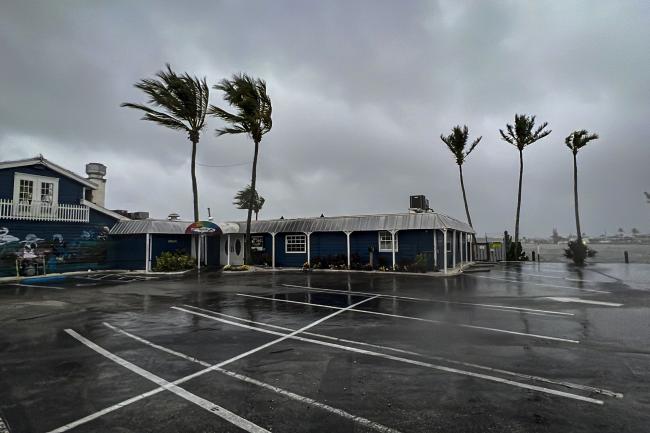(Bloomberg) -- Hurricane Ian barreled ashore in Southwest Florida with a massive and deadly surge of water and catastrophic winds that are poised to make it one of the costliest storms in US history.
Ian’s strength rapidly intensified as it approached landfall, driving its winds up to 155 miles (250 kilometers) per hour, just 2 mph shy of a Category 5 rating on the five-step, Saffir-Simpson scale. Nearly all of Florida, home to 21 million people, braced for widespread blackouts and floods.
“This is going to be a tragic event,” Florida Governor Ron Desantis said during a briefing as the storm neared shore. “It’s something that is going to be there for days, weeks, months and unfortunately in some circumstances even years.”
A storm of this magnitude is a severe test for Florida’s infrastructure due to its low-lying and densely populated coastal areas that are prone to flooding. It comes as climate change has fueled extreme weather worldwide this year, including deadly flooding in Kentucky and Pakistan, a European heat wave that killed more than 2,000 people in Portugal and Spain, and relentless drought in the US west.
Only four storms have hit the US mainland with stronger winds since modern record keeping began in 1851: the Labor Day Hurricane of 1935, Camille in 1969, Andrew in 1992 and Michael, which struck the Florida Panhandle in 2018, according to Phil Klotzbach, a hurricane researcher at Colorado State University. Ian is expected to cause more than $67 billion in damages and losses.
Andrew and Michael were among the 10 costliest in US history, according to the National Centers for Environmental Information.
Read more: The top 10 costliest US tropical storms
A wall of water up to 16 feet is expected to push into the coastline and harbors along the shoreline, the National Hurricane Center said. On top of that, damaging waves may make conditions even worse and could literally dislodge homes from their foundations or topple them into rubble.
Such a catastrophic event is threatening to further upend an already unstable home-insurance market. The largest insurers reduced their presence in the state to dodge losses brought on by Atlantic hurricanes, and the smaller underwriters still active there have been forced to hike premiums and narrow coverage to keep pace with litigation and fraud. So far this year, six insurers that write policies in the Sunshine State have been declared insolvent, and a major storm could stretch the finances of the companies still standing.
Read more: Tracking Hurricane Ian’s path
More than 2 million people have been ordered or urged to flee prior to Ian’s arrival.
In addition to the roof-ripping winds and surge, Ian is forecast to drop nearly two feet of rain across central Florida and send rivers across the entire state out of their banks for days. Power outages will be widespread, potentially lasting for days or even weeks, and many roads will be impassable.
Ian also strikes just as Florida’s citrus crop was ready for harvest, which could damage the state’s prospects, said Don Keeney, a meteorologist with commercial forecaster Maxar. In addition, it has choked off air travel throughout the south.
©2022 Bloomberg L.P.

